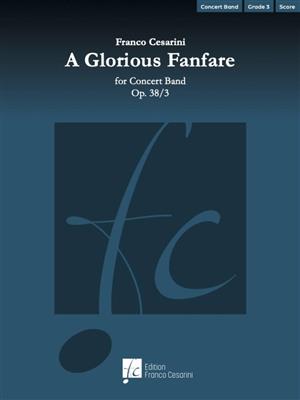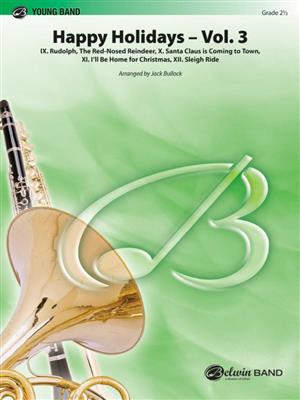Results
-
£34.00
-
£23.00
Woodwind Quartet Collection Volume 3 - Various Composers
Estimated dispatch 10-14 working days
-
£26.00
Woodwind Quintet Collection Volume 3 - Various Composers
Estimated dispatch 10-14 working days
-
 £70.99
£70.99Air From Suite No. 3 - Johann Sebastian Bach - Frank Bernaerts
Estimated dispatch 10-14 working days
-
 £70.99
£70.99Iron Man 3 - Brian Tyler - Frank Bernaerts
Estimated dispatch 10-14 working days
-
 £123.20
£123.203 Letzte Motetten - Anton Bruckner
Anton Bruckner (b. 4.9.1824, Ansfelden, d. 11.10.1896, Vienna) didn't have it easy. Throughout his life, the Austrian composer was plagued by self-doubt. Anton Bruckner came from a simple, rural background. After the death of his father, he was accepted as a choirboy at the monastery of Sankt Florian in 1837. After several years as a school assistant and his own organ and piano studies, he first worked as organist in St. Florian, then from 1855 as cathedral organist in Linz. Introduced to music theory and instrumentation by Simon Sechter and Otto Kitzler, he discovered Richard Wagner as an artistic role model, whom he admired throughout his life and also visited several times in Bayreuth.In 1868 Anton Bruckner became professor of basso continuo, counterpoint and organ at the Vienna Conservatory; ten years later court organist; and in 1891 finally honorary doctor of the University of Vienna. He was considered an important organ virtuoso of his era, but had to wait a long time for recognition as a composer. It was not until Symphony No.7 in E major, composed between 1881 and 1883, with the famous Adagio written under the effects of Wagner's death, that he achieved the recognition he had hoped for, even if he was reluctant to accept it given his inclination towards scepticism and self-criticism.Anton Bruckner was a loner who did not want to follow a particular school or doctrine. He composed numerous sacred vocal works, such as his three masses, the Missa Solemnis in B flat minor (1854), the Te Deum (1881-84) and numerous motets. As a symphonic composer, he wrote a total of nine symphonies and many symphonic studies from 1863 onwards, tending to revise completed versions several times over. Bruckner's orchestral works were long considered unplayable, but in fact were merely exceptionally bold for the tonal language of their time, uniting traditions from Beethoven through Wagner to folk music, on the threshold between late Romanticism and Modernism.Anton Bruckner composed about 40 motets during his lifetime, the earliest a setting of Pange lingua around 1835, and the last, Vexilla regis, in 1892.Thomas Doss has compiled some of these motets in this volume for symphonic wind orchestra.These motets show many characteristics of personal expression, especially Bruckner's colourful harmony in the earlier works, which is in places aligned with Franz Schubert (changes between major and minor; and movements in thirds). Later works are characterised by many components which, in addition to the expanded stature of the movements, include above all a sense of the instrumentation as an outward phenomenon and the harmony as a compositional feature that works more internally. Some aspects of Bruckner's work are the result of his long period of study, which familiarised him not only with the tradition of his craft, but also gave him insights into the "modernity" of his time in such composers as Wagner, Liszt and Berlioz.From this developed his personal standpoint, which always pursues the connection between the old and the new.
Estimated dispatch 7-14 working days
-
 £94.00
£94.00A Glorious Fanfare Op. 38/3 - Franco Cesarini
Franco Cesarini was commissioned to write A Glorious Fanfare by the Band Association of the Zug Canton in Switzerland (Zuger Blasmusikverband), to celebrate the centenary of the Association (1922-2022).The composition is the third in a trilogy of scintillating concert opening pieces (which make up opus 38), together with A Triumphant Fanfare and A Joyful Fanfare. A majestic fanfare entrusted to the trumpets introduces the piece. Subsequently a cantabile variant of the same theme is presented leading to a finale with rich and impressive sounds.An ideal opening piece that will delight your audience!
Estimated dispatch 7-14 working days
-
£351.10
Piccobello 3 - Felice
Estimated dispatch 7-14 working days
-
 £47.50
£47.50Tuning Chorales for Band Vol. 3 - Richard L. Saucedo
Using the concept of drones as well as tuning hints written into both the score and parts, this volume of chorales will help students understand more of the tuning process and how it feels as well as how it sounds. (Keys: DbMajor, C Minor, C Major)
Estimated dispatch 7-14 working days
-
 £64.50
£64.50Happy Holidays - Vol. 3
The third installment in the wildly versatile series, the suite includes Rudolph, the Red-Nosed Reindeer, Santa Claus Is Coming to Town, I'll Be Home for Christmas, and Sleigh Ride. Playable year after year using quintets, woodwind or brass ensembles, or full concert band. Adding this volume, there are now 12 holiday classics available for the ultimate in flexibility while programming your holiday concert. Also available: Vol. 1 (00-42178) and Vol. 2 (00-43107). Bravo! (7:00)
Estimated dispatch 7-14 working days
